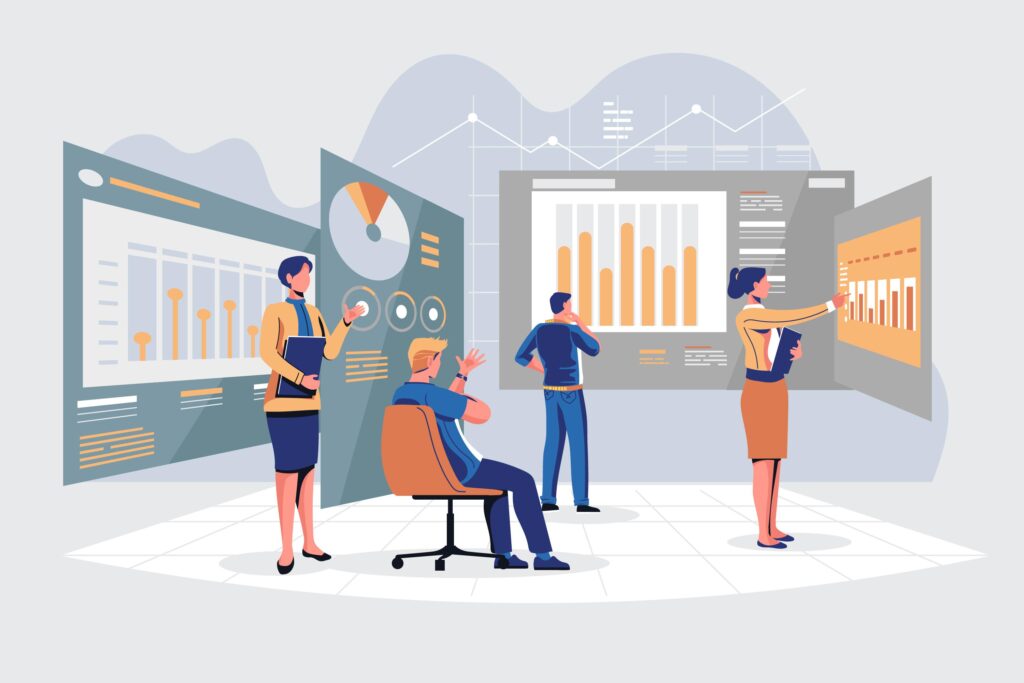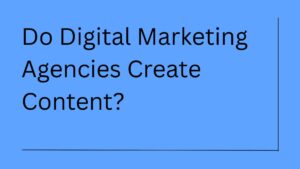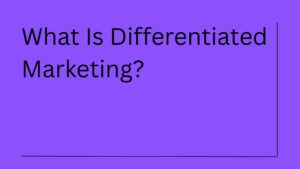If you’ve ever found yourself knee-deep in data, trying to make sense of endless rows and columns, you’re not alone. In this data-driven world, businesses and individuals alike are swimming in a sea of information. But here’s the good news: there’s a life raft out there, and it’s called Tableau software. Whether you’re a seasoned data analyst or someone who’s just starting to dip their toes into the world of data visualization, Tableau has something for everyone.
Let’s embark on a journey to discover what Tableau Software is all about, why it’s a game-changer, and how it can make your data woes a thing of the past.
What is Tableau Software and what does it mean?
Let’s start with the basics. Tableau is a powerful data visualization tool that helps you transform raw data into insightful, interactive visualizations. Imagine having a magical lens that turns complex data into beautiful, easy-to-understand charts and graphs. That’s Tableau in a nutshell. Developed by Tableau Software, which was founded in 2003 and later acquired by Salesforce in 2019, Tableau has become one of the leading tools in the business intelligence (BI) space.

But what sets Tableau apart?
It’s designed with the end-user in mind, focusing on making data accessible and understandable for everyone, regardless of their technical expertise. You don’t need to be a coding wizard or a data scientist to create stunning visualizations. With Tableau, if you can imagine it, you can create it.
Components of Tableau Software
Tableau Software is packed with powerful components that cater to a wide array of data visualization and analysis needs. Whether you are a data enthusiast, a business analyst, or a manager looking to make data-driven decisions, understanding these components will help you harness the full potential of Tableau. Let’s explore each key component in detail.
Tableau Desktop
Tableau Desktop is the cornerstone of Tableau’s suite of tools. It’s the primary application used for creating detailed and interactive dashboards and data visualizations. Here’s what makes Tableau Desktop so indispensable:
Data Connectivity: Tableau Desktop connects to a vast array of data sources. Whether you have data in an Excel spreadsheet, a complex SQL database, or a cloud service like Google Analytics, Tableau Desktop can seamlessly integrate and pull in data from these sources.
User-Friendly Interface: Its intuitive drag-and-drop interface allows users to create stunning visualizations without needing any programming skills. You can build everything from simple bar charts to complex multi-dimensional reports.
Advanced Analytics: With features like calculated fields, forecasting, trend analysis, and statistical summaries, Tableau Desktop allows you to perform advanced analytics to uncover deep insights.
Customization and Flexibility: Users can customize the appearance and behavior of their visualizations extensively. From adjusting colors and fonts to creating custom shapes and formats, Tableau Desktop provides a high degree of flexibility.
Tableau Server
Tableau Server is designed for collaboration. It’s a powerful, secure platform that enables you to share your Tableau Desktop creations across your organization. Here’s why Tableau Server is a game-changer:
Secure Sharing: Tableau Server ensures that your visualizations and dashboards are shared securely within your organization. It supports role-based access control, so you can manage who can view and interact with the data.
Real-Time Collaboration: Multiple users can collaborate in real-time on data projects. This collaborative environment accelerates decision-making processes by providing a single source of truth that everyone can rely on.
Scalability: Tableau Server is highly scalable, capable of handling large volumes of data and numerous concurrent users without compromising on performance. This makes it suitable for organizations of all sizes.
Tableau Online
Tableau Online offers all the functionalities of Tableau Server, but with the added convenience of being a hosted solution. Here’s what you need to know about Tableau Online:
Cloud-Based: Tableau Online is hosted in the cloud, which means you don’t have to worry about the hardware and maintenance that comes with managing a server. Tableau takes care of all the backend infrastructure, so you can focus on your data.
Accessibility: With Tableau Online, you can access your dashboards and visualizations from anywhere, at any time. This is particularly useful for remote teams or organizations with a global presence.
Automatic Updates: Tableau Online ensures that you always have access to the latest features and updates, as Tableau manages the deployment of new versions.
Tableau Prep
Tableau Prep is designed to help you prepare and cleanse your data before analysis. Here’s why Tableau Prep is essential:
Data Cleaning: Tableau Prep provides a suite of tools to clean and transform your data. You can remove duplicates, correct inconsistencies, and reformat data easily, ensuring that your data is accurate and reliable.
Data Shaping: It allows you to merge, split, pivot, and aggregate your data, making it easier to work with. You can combine data from multiple sources and reshape it to fit your analysis needs.
Visual Interface: Tableau Prep features a visual interface that shows you each step of your data preparation process. This transparency makes it easy to understand the transformations being applied and spot any issues early.
Tableau Public
Tableau Public is a free version of Tableau that allows users to create and publish visualizations on the web. Here’s why Tableau Public stands out:
Free Access: Tableau Public provides a powerful platform for individuals and small businesses who may not have the budget for the full suite of Tableau products. It’s a great way to get started with data visualization.
Public Sharing: Visualizations created with Tableau Public can be published to the web and shared with a global audience. This makes it a valuable tool for bloggers, journalists, educators, and anyone looking to share insights publicly.
Community Engagement: Tableau Public fosters a vibrant community of data enthusiasts. You can explore and interact with visualizations created by others, gain inspiration, and even showcase your work to the world.
Key Features Tableau Software
Tableau’s popularity isn’t just by chance; it’s packed with features that cater to a wide range of users and use cases. Let’s dive into some of the key features and benefits that make Tableau a standout tool in the world of data visualization.
User-Friendly Interface
One of Tableau’s biggest selling points is its intuitive and user-friendly interface. The drag-and-drop functionality allows users to create complex visualizations without writing a single line of code. This ease of use makes Tableau accessible to everyone, from data novices to seasoned analysts.
Interactive Dashboards
Tableau excels at creating interactive dashboards that allow users to explore data in a dynamic way. These dashboards can be customized with filters, parameters, and actions, giving users the ability to drill down into the details and uncover hidden insights.
Real-Time Data Analysis
In today’s era, having access to real-time data is crucial. Tableau allows users to connect to live data sources, enabling real-time updates and instant insights. Whether you’re tracking sales performance or monitoring website traffic, Tableau keeps you in the know.
Robust Data Connectivity
Tableau supports a wide range of data sources, from Excel spreadsheets and SQL databases to cloud services like Google Analytics and Salesforce. This versatility ensures that you can bring all your data together in one place, making it easier to analyze and visualize.
Advanced Analytics
For those who need to dive deeper into their data, Tableau offers advanced analytics capabilities. Users can create calculated fields, perform statistical analysis, and even incorporate predictive modeling, such as predictive analytics. This powerful feature set ensures that you can extract maximum value from your data.
How Tableau Software Works?
Now that we’ve covered what Tableau is and its standout features, let’s take a closer look at how it actually works. Understanding the workflow in Tableau can help you appreciate its power and flexibility.
Connecting to Data
The first step in using Tableau is connecting to your data source. Tableau offers a plethora of connectors that make this process seamless. Whether your data is stored in a local file, a database, or a cloud service, Tableau can connect to it with ease. Once connected, Tableau will display your data in a structured format, ready for analysis.
Data Preparation
Before diving into visualization, you may need to clean and prepare your data. Tableau provides a range of tools for data preparation, including data blending, filtering, and aggregation. These tools help you shape your data into the right format for analysis.
Building Visualizations
With your data prepared, it’s time to create visualizations. Tableau’s drag-and-drop interface makes this process straightforward. You can choose from a variety of chart types, including bar charts, line charts, scatter plots, and more. By simply dragging fields onto the canvas, you can build visualizations that tell a story with your data.
Creating Dashboards
Individual visualizations are great, but the real power of Tableau comes from combining them into interactive dashboards. Dashboards allow you to bring together multiple visualizations, providing a comprehensive view of your data. You can add filters, actions, and parameters to make your dashboards dynamic and interactive.
Sharing and Collaboration
Once your dashboards are ready, Tableau makes it easy to share your insights with others. You can publish your dashboards to Tableau Server or Tableau Online, where they can be accessed by colleagues and stakeholders. Tableau also offers embedding options, allowing you to integrate your dashboards into websites and applications.
Real-World Applications of Tableau
Tableau’s versatility means it can be used in a wide range of industries and applications. Let’s explore some real-world examples to see how Tableau is making a difference.
Business Intelligence and Analytics
In the world of business intelligence, Tableau is a game-changer. Companies use Tableau to track key performance indicators (KPIs), analyze sales data, and monitor operational metrics. With Tableau, decision-makers can quickly identify trends, spot opportunities, and make data-driven decisions.
Healthcare
In the healthcare industry, data is critical for improving patient outcomes and operational efficiency. Tableau helps healthcare providers analyze patient data, track treatment outcomes, and manage resources. By visualizing data, healthcare professionals can identify patterns and make informed decisions that enhance patient care.
Education
Educational institutions are leveraging Tableau to improve student performance and institutional effectiveness. Tableau allows educators to analyze student data, track academic progress, and identify areas for improvement. This data-driven approach helps schools and universities create better learning environments and support student success.
Marketing and Sales
Marketers and sales teams use Tableau to gain insights into customer behavior, track campaign performance, and optimize sales strategies. By visualizing marketing and sales data, teams can identify what’s working, what’s not, and where to focus their efforts for maximum impact.
Public Sector
Government agencies and non-profits use Tableau to analyze data related to public services, community programs, and policy outcomes. Tableau helps these organizations make data-driven decisions that improve public services and drive positive change in communities.
Getting Started with Tableau Tool
If you’re excited about the possibilities that Tableau offers, you might be wondering how to get started. Here are some steps to help you embark on your Tableau journey.
Download and Install Tableau Software
The first step is to download and install Tableau. Tableau offers a free trial, so you can explore its features before committing to a purchase. Visit the Tableau website, download the software, and follow the installation instructions.
Explore Tableau Resources
Tableau offers a wealth of resources to help you get started. The Tableau Community is a great place to connect with other users, ask questions, and share insights. Tableau’s website also features a range of tutorials, webinars, and documentation to guide you through the learning process.
Practice with Sample Data
To get hands-on experience, practice with sample data sets. Tableau provides sample workbooks and data sets that you can use to build your first visualizations. This hands-on practice will help you become familiar with Tableau’s interface and features.
Take a Course
If you prefer structured learning, consider taking a Tableau course. There are many online courses available, ranging from beginner to advanced levels. These courses provide step-by-step instructions and practical exercises to help you master Tableau.
Start Building Your Own Dashboards
Once you feel comfortable with Tableau, start building your own dashboards. Choose a data set that interests you and experiment with different visualizations. The more you practice, the more proficient you’ll become.
Conclusion
Tableau is more than just a tool; it’s a gateway to understanding and leveraging the power of data. Whether you’re looking to make data-driven decisions for your business, improve patient care, enhance educational outcomes, or drive positive change in your community, Tableau has the tools you need. Its user-friendly interface, powerful features, and broad applicability make it a must-have for anyone looking to harness the power of data visualization.
So, why not give it a try? Dive into the world of Tableau and discover how it can transform the way you see and understand data. Happy visualizing!






6 thoughts on “Understanding What is Tableau Software: A Beginner’s Guide?”
I like this site, it’s a masterpiece blog on tableau software solution! Glad I found this!
This is my first time to pay a quick visit at here, and I am really happy to read everything about tableau software at one place.
I really like reading through a post that can make men and women think to use “Tableau” software. Also, thank you for allowing me to comment!
I do not even understand how I ended up here reading such as interesting article on basics of Tableau, but I assumed this publish used to be great
This is fascinating, You’re a very skilled blogger. I’ve joined your feed and look forward to seeking more of your magnificent post about the visualization tools like Tableau. Also, I’ve shared your site in my social networks!
I very delighted to find this article on Visualization tool topic on Bing; just what I was searching for as well saved to favorites list.